Inside the End of the ‘Freedom Convoy’ Occupation of Ottawa
Credit to Author: Mack Lamoureux| Date: Tue, 22 Feb 2022 18:20:37 GMT
OTTAWA — It’s 3:30 in the morning in downtown Ottawa and the protesters are trying to make a “snow wall.”
About 50 of them are using shovels to push the snow toward the barricade police put up earlier. It’s snowing hard out early Saturday morning, so they say they have no idea just how impressive a snow wall they can erect. A man not visible in the darkness is barking orders in French, coordinating the shoveling. It's too cold to smell any desperation, but it feels like a desperate move by a desperate group.
One young shoveller tells me he came out from a nearby town in Quebec a few hours earlier because he’d heard someone was killed by a horse (a false rumour from earlier in the day that spread like wildfire, largely due to a Fox News contributor) and that he couldn't sit at home anymore.
When asked if he thinks the snowbank slowly growing in front of us will help in the morning, he quickly replies "no" before pausing.
“But we have to do something," he said.
The late-night gambit could be seen as a reflection of the “freedom convoy” protests in Ottawa: people spurred on by disinformation efforts coming together and doing something drastic, and frankly, silly. The man-made snow banks didn’t stop the police advancement the next day, and dozens of protesters were arrested, their trucks finally moved, and downtown Ottawa returned relatively to its natural state—quiet.
This is how one of the more bizarre protests in Canadian history came to an end, at least for now.
The occupation of Ottawa, which lasted three weeks, started on its face as a protest against vaccine mandates for truckers crossing the U.S.-Canada border, but for the organizers and attendees it was always about something more. The “freedom convoy” people carried many other right-wing grievances in their back pocket, raised millions of dollars, and grabbed extensive media coverage internationally, particularly from conservative outlets in the U.S. Once they arrived in Ottawa, authorities just allowed them to pull their big rigs in front of Parliament, and the trucks honked and honked, and sat there for the duration.
The protesters set up shop like they were establishing a forward-operating base. They set up supply areas offsite and vowed they weren't going to leave until their demands—nebulous and ever-changing, ranging from government leaders’ resigning to removing mask rules—were met. On weekends more people would join the cause, creating a tailgate party atmosphere. The group also had the occasional Confederate-flag waving and several hundred hate-crime complaints. Other copycat protests popped up across the country, some shutting down major U.S.-Canada border points (one of which actually ended in murder conspiracy charges).
Many of the people in the demonstration, and not just the organizers, have long played significant roles in anti-vaccine and COVID-conspiracy protests across Canada. Others have deep ties to far-right organizing. But for plenty of the participants, it was their first major protest.
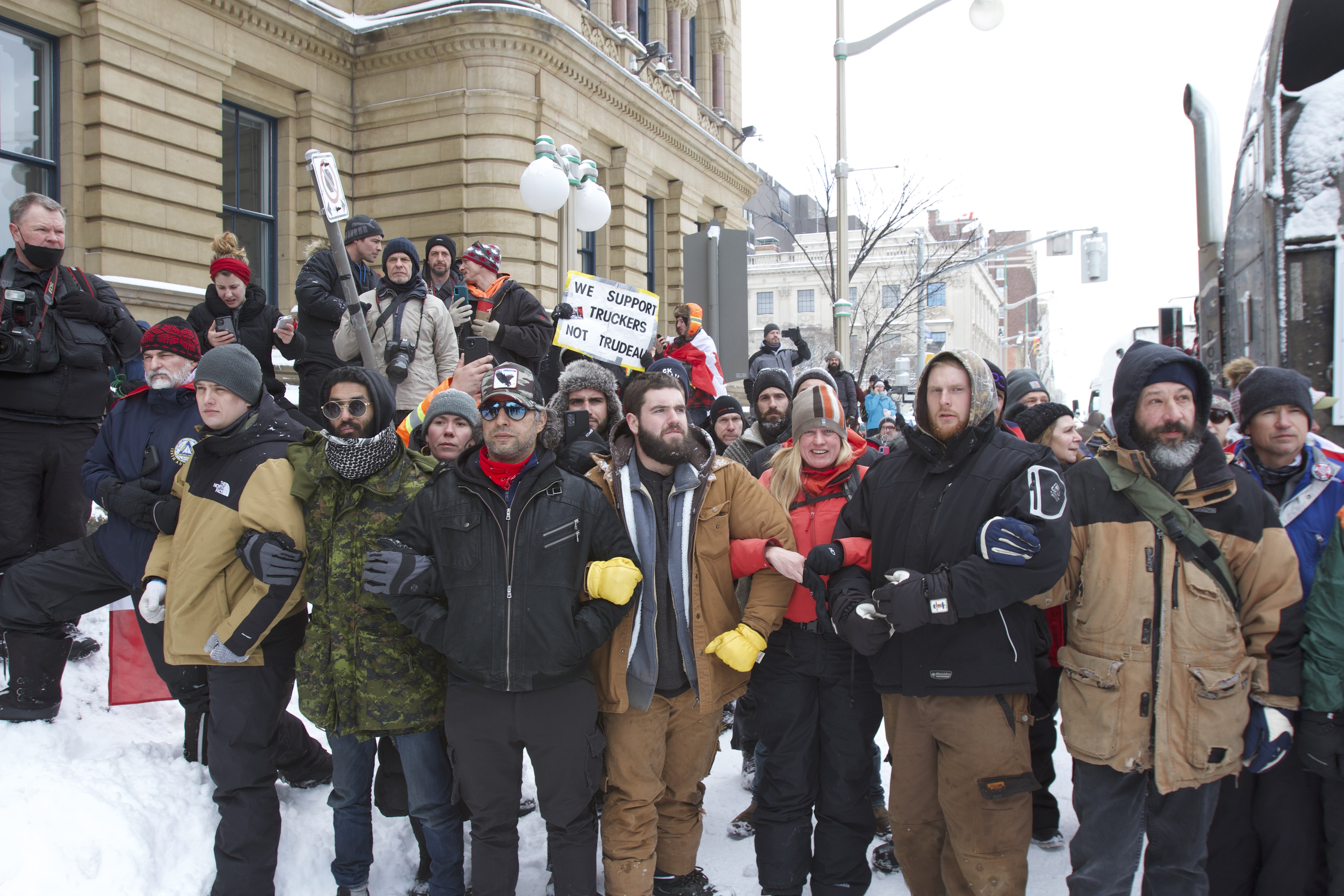
A feeling of being left out of the conversation and an all-encompassing fear of “tyranny”—seemingly defined as any government action people disagreed with—was the overarching theme among the group. Conspiracies such as QAnon rambles, Bill Gates creating COVID so he could depopulate the world, and just general anti-vaccine fear-mongering were as prevalent as the falling snow. If you listened to what the crowd was saying, the scene was like a comment section come to life.
Unsurprisingly for a protest obsessed with memes, there were plenty of jokesters in the crowd, like the man who carried around a cardboard cutout of Trudeau and asked people to say what they wanted to Trudeau—as long as he could livestream it.
But to get a sense of everything, you need to get a sense of place. The occupation by the demonstrators sprawled out throughout several downtown roads but the central focus was on Wellington, the street that runs in front of Canada’s Parliament Hill. Here trucks and trailers were parked in the centre of the road, a stage had been erected, and, of course, merchandise was up for sale (many protesters stalked the ground in Freedom 2022 hoodies or toques). Some people had set up an inflatable hot tub and others a bouncy castle.
And while people in downtown Ottawa told me in prior weeks it had an unpleasant festival vibe—“they completely take over,” one resident said—the mood was decidedly more serious among many protesters on this final weekend—when the police finally showed up en masse.
Ottawa police had brought in cops from across the country, and you couldn’t turn a street corner without seeing a cop or four. Just to get downtown in a car, you had to go through several checkpoints and explain why you were there.
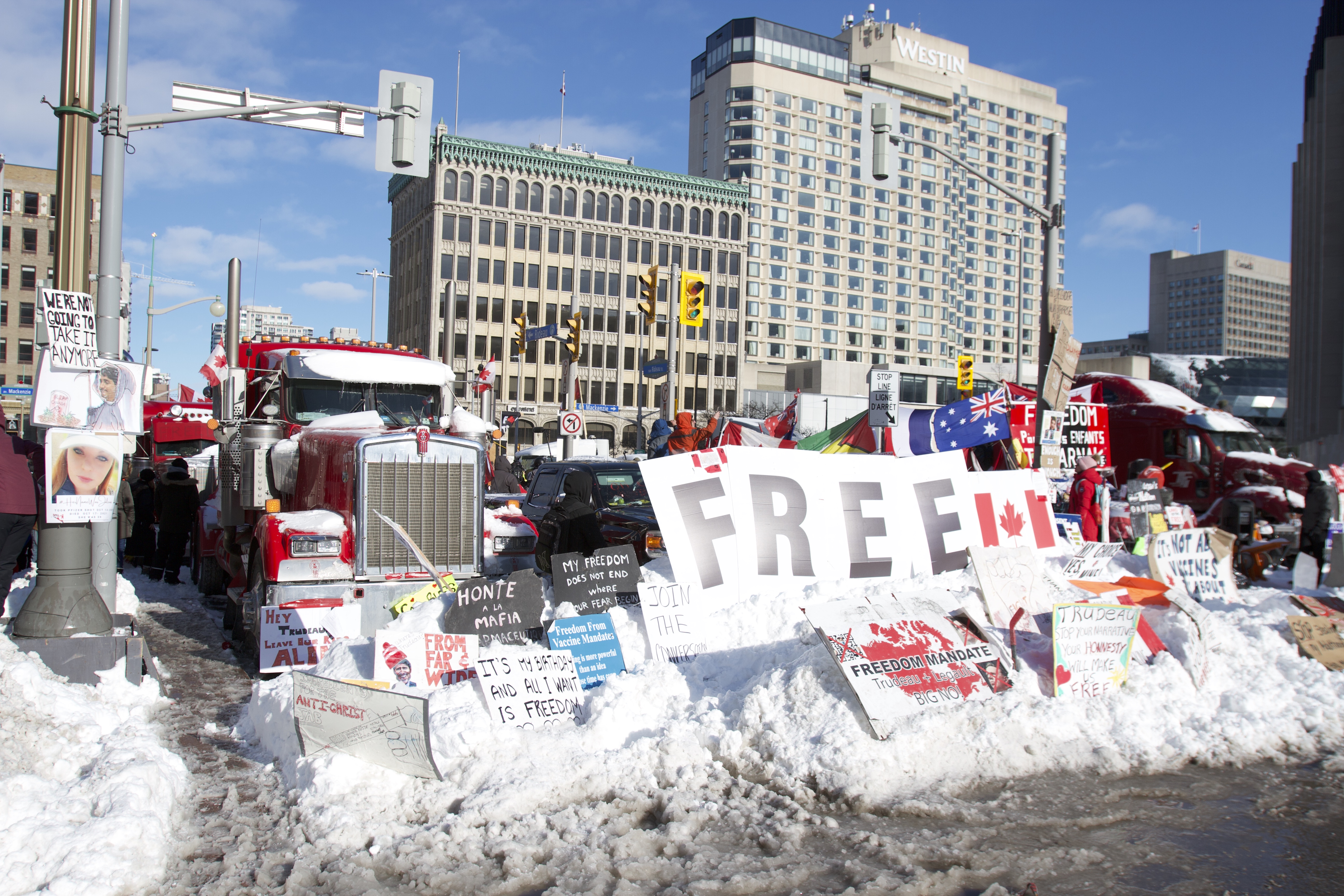
The operation began in earnest on Friday, a bitterly cold Ottawa day, in front of the Fairmont Château Laurier, a few buildings over from Parliament. Police formed a line on the other side of the blockade and slowly and methodically pushed the protest back. Because of this glacier approach, the confrontations seemed to be at a minimum, a stark contrast to many major police operations in Canada.
Protesters seemingly played Bob Marley’s Legend on a loop. Paired with the horns, chants of "shame," and screams of "freedom” it all created an unholy cacophony that soundtracked the day. People in front tried to plead with the police officers to join them, and a few even brought their kids to join them arm and arm in front of the police. One man, who was adorned with fresh face paint like a Braveheart extra, called for more protesters to the front line to make the police “cry.”
“Remind them that their heart is beating!” he shouted. “They’re going to have to rotate officers out and then we’ll make those officers cry.”
There were many tears on the front line, they all came from the protesters. One man, who brought his service dog to the front of the protest, told VICE World News he was surprised the police pushed him and his dog back.
Many in the crowd believed that if protesters weren’t violent they should be allowed to remain there for as long as they wanted. Some protesters talked about how this was the closest thing they’ll ever get to the 60s;a few even knelt in front of the cops or lay on their backs in front of them. Others tried to give flowers to officers on the front line. “Hold the line” was a refrain heard over and over throughout the two days by the protesters—but when the police pushed the protesters moved. Few, if any, tried to dig in and hold their ground.
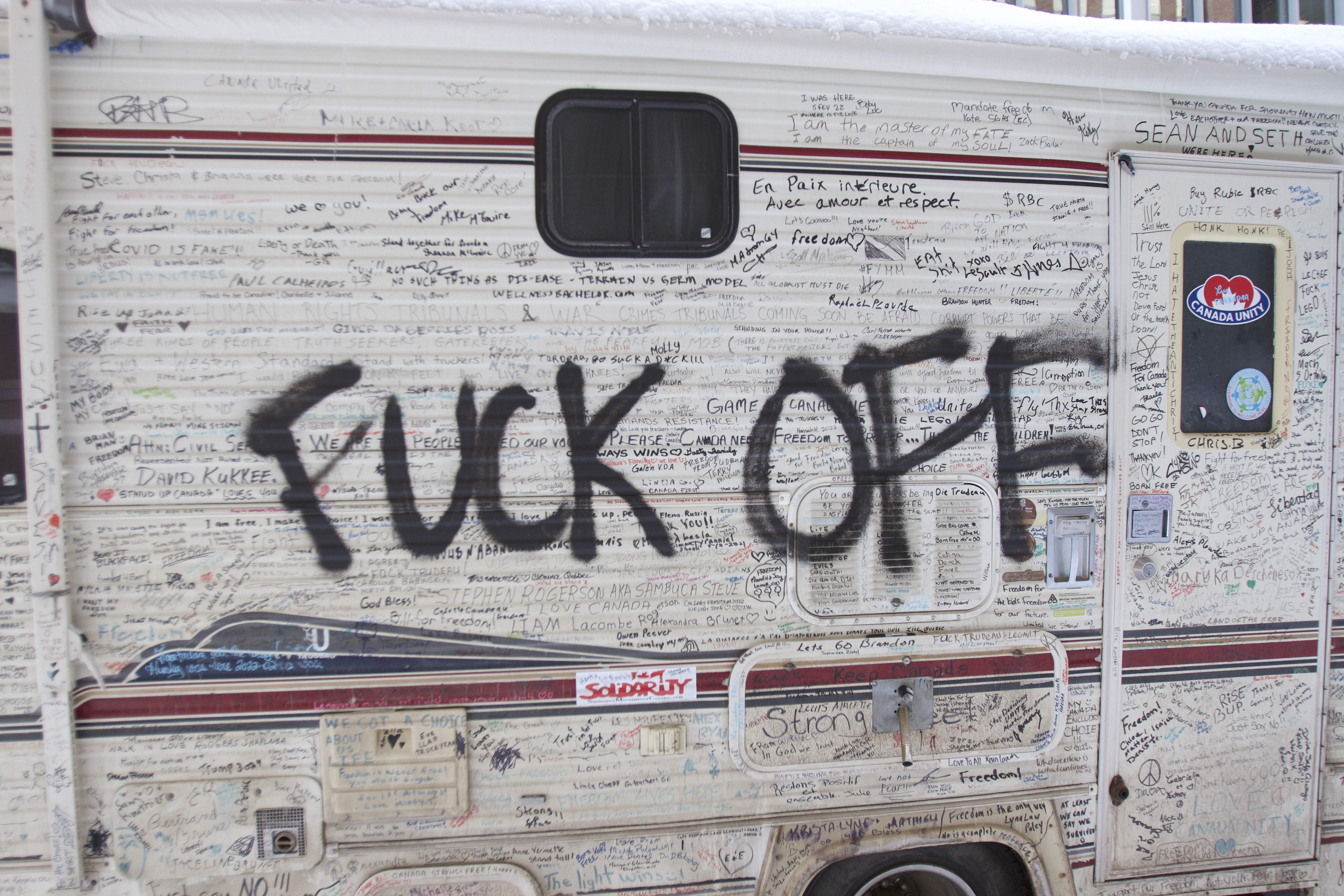
While the vast majority of Ottawa residents I interviewed, especially those who lived in the downtown core, expressed immense displeasure with the convoy,one local business, Iconic Cafe, two blocks off Wellington, supported it. Demonstrators could go there to warm up and grab a coffee. When I walked in there with a mask on and a press pass, I was quickly questioned.
“Are you with CBC or CTV?” the owner asked, naming Canada’s two largest television networks, before disparaging reporters in general. When one customer ordered something he loudly exclaimed, “Isn’t it great to choose what goes in your body?” After police had largely retaken the downtown core on Sunday, the cafe owners and a few other die-hards locked themselves inside. A bunch of cops showed up, but it was resolved peacefully, with cops just ticketing them.
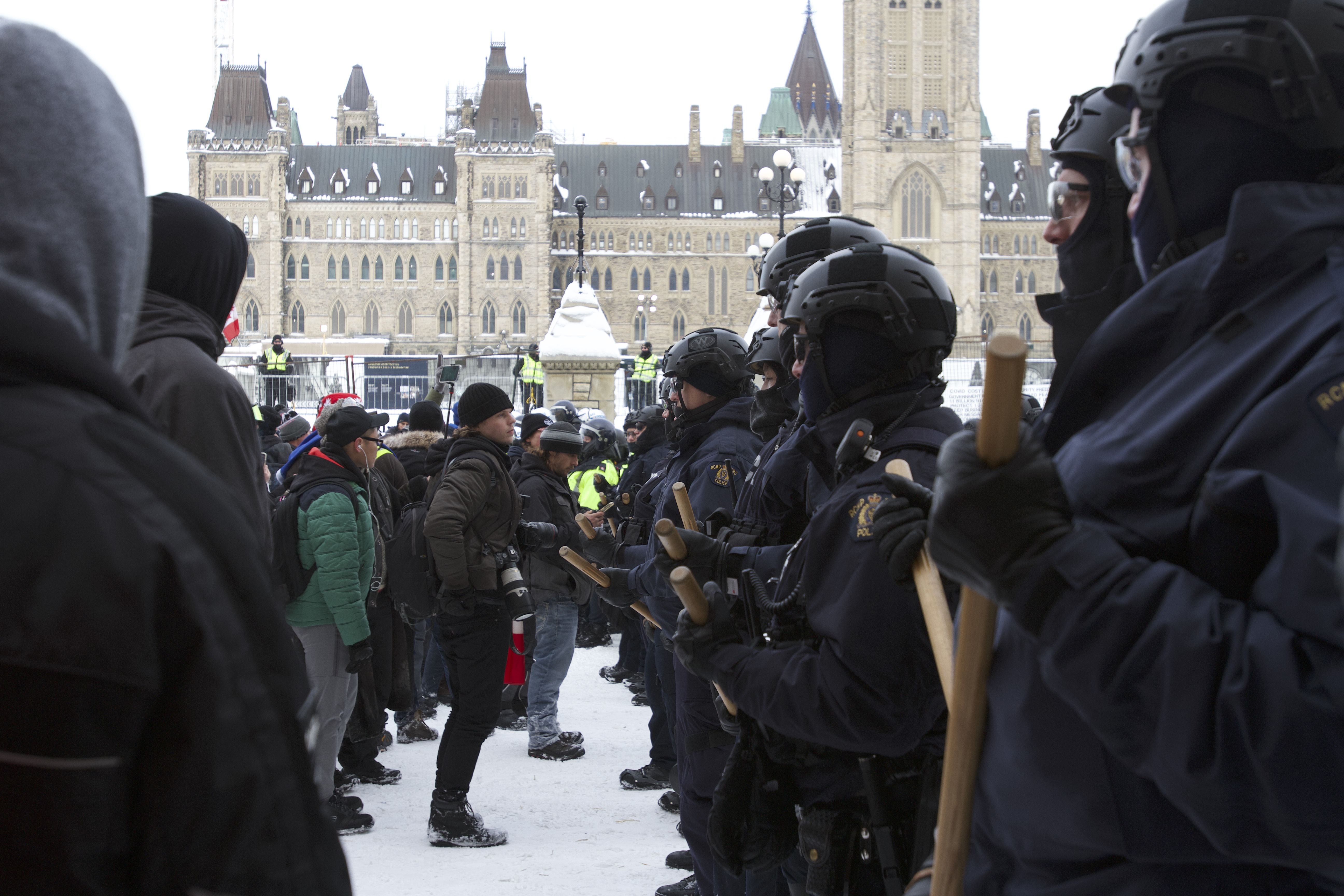
While police did use force and push the protesters back, and there were small operations where weapons were drawn, non-violent resolutions between police and protesters were common all weekend. Many commenters were quick to note how recent protests ended quite differently, with police accused of using brutal force to remove homeless encampments in Toronto, or to aggressively arrest Indigenous and environmental protesters at Fairy Creek.
One of the clearest things that came across when on the ground is how, for many of these people, this was their first protest and they never paid attention to how police treat protesters in Canada. Any police action was downright shocking to many. The attitude was likewise spurred on by right-wing media who acted like this was an unheard-of level of force used on the protesters—which anyone familiar with the Montreal student protest, or the G20 protest will tell you it certainly was not. And for people who constantly compared Trudeau to a tyrannical dictator, they seemed downright shocked that police would be deployed.
“I can’t believe they’re doing this to a peaceful protest,” one man said to me. “It’s like we're in Communist China.”
The most notable act of police aggression was on Friday, when police brought in horses to push back the crowd. Video shows two people who weren’t able to get out of the way of the horses and fell down and appeared to be trampled. The video is rather brutal and has been shared widely. Ottawa police claimed that there were no injuries, but the Special Investigation Unit is investigating the incident and said "a woman has a reported serious injury." This mere sight of horse cops would spark fear and anger in the crowd for the rest of the weekend.
The crowd was often an angry one and, lucky for them, they had prime access to one of their enemies. Protesters flocked to the news cameras constantly and screamed, mobbed, and even spit on reporters. A couple of TV correspondents were pushed live on air. Photographers and print journalists were targeted but the main focus of the vitriol were TV crews. On Friday, a man spent a significant amount of his day following around a CBC crew, pointing at them and yelling to his fellow protesters, “There’s CBC; let them know what you think.”
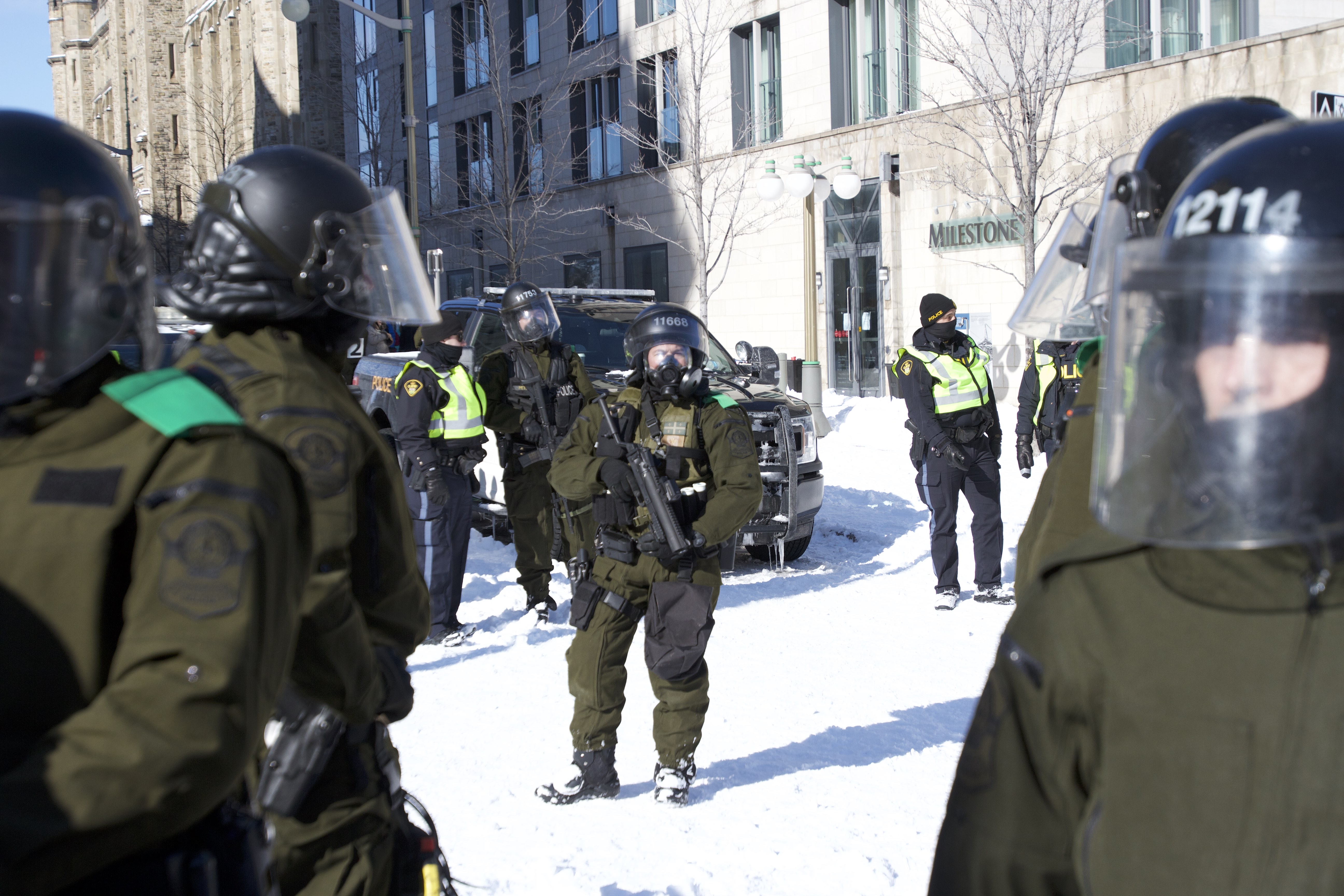
The protest's mood shifted dramatically from Friday to Saturday morning. Any hope that protesters could stand their ground was utterly extinguished on Saturday, when police, brandishing batons and clubs, advanced on the crowd in a far quicker and more militant manner than the previous day. Protesters who resisted arrest were hit with clubs and roughly dragged away. When police were able to push the protesters back past some of the trucks parked on the road, they would break the window and arrest whoever was inside. At one point there was smoke in the air leading many people, including reporters, to believe it was tear gas. While there was clearly an irritant in the air it was far too mild to be tear gas (police also alleged protesters set off a smoke bomb.).
It didn't take long for many protesters to resign themselves to the fact the “freedom convoy” siege of Ottawa was over.
“It takes what it takes,” said Mitch, a construction worker on the front line, when asked if he was willing to get arrested. “Luckily I won’t lose work over this; I have a boss who knows I’m here and knows I might not show up next week.”
The heaviest portion of the police operation didn’t last long on Saturday. Police kept pushing protesters back throughout the morning and soon enough the demonstrators were finally pushed off Wellington. They
had lost the battle before noon.
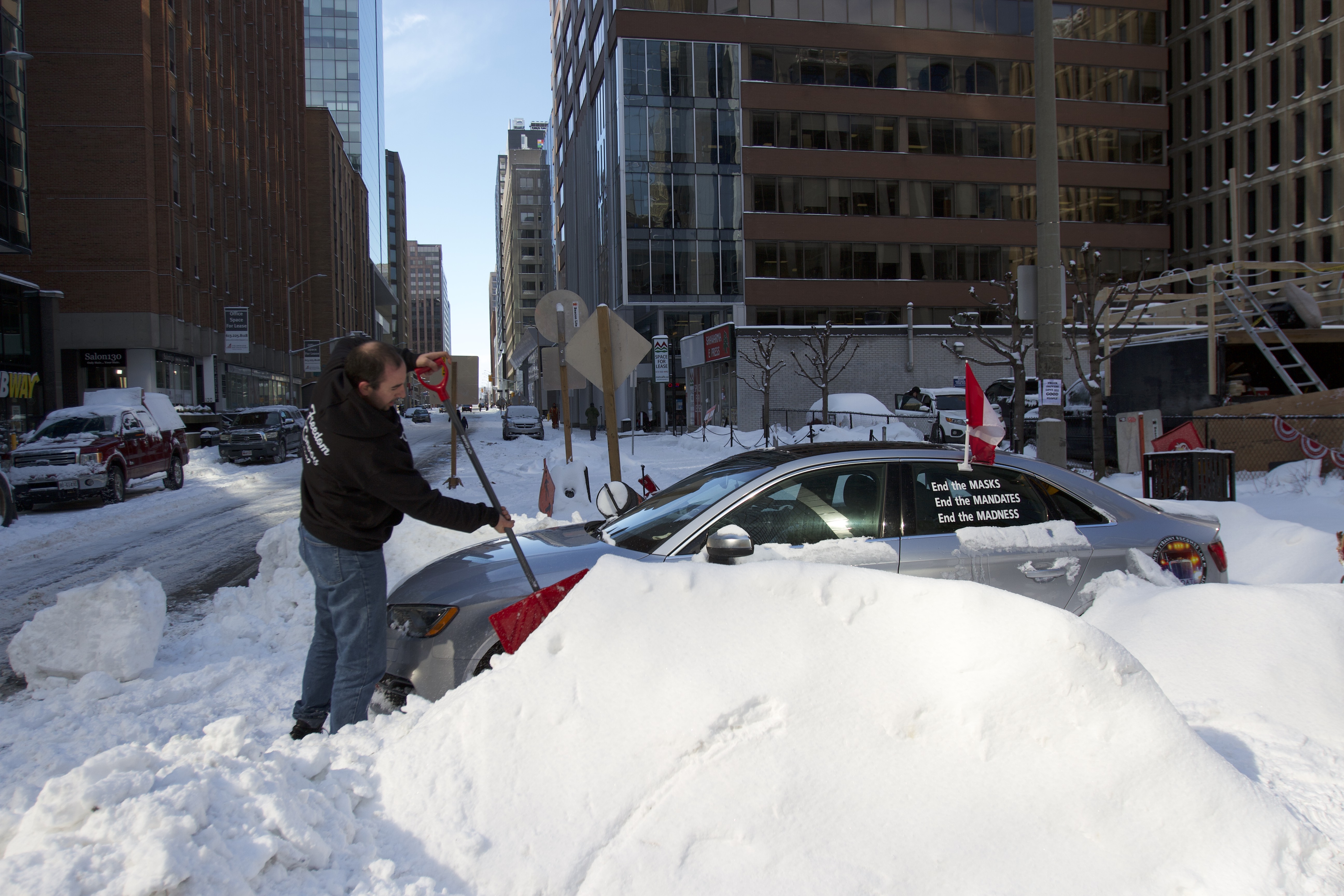
Once pushed off Wellington, the protesters remained on the side streets and held a pretty typical protest—they had lost whatever je ne sais quoi the trucks had given them. Across the city, the trucks continued to leave slowly and steadily, protesters who had been there for weeks began to dig their vehicles out, and the organizers publicly called for a retreat. The mood was sour.
Throughout the day those who were there continued to rally and at night did what many came there to do— party. For a moment the mood was jovial but there were some confrontations with police, including police pushing them back repeatedly and, at one point deploying an anti-riot weapon that shoots non-lethal projectiles (SIU are investigating that weapon's use as well) but nothing as dramatic as earlier in the day.
Later in the evening, far past the time of the peak protest, a small smattering of protesters peppered the streets and continued to bray out calls of “freedom”, again, like extras, in Braveheart. At times, not unlike mating calls, you would hear “freedom!” repeated back from a block or two away.
By late Saturday night, folks were drunk and emotional. As I walked to see what remained of the protest, a man and his friend came up to me noticing my DSLR hanging around my neck. The drunk man, doing up his pants after taking a piss on a nearby building, accused me of being “Trudeau’s photographer.” A friend of his had to intervene and walked the man away.
The agitated man yelled a homophobic slur at me and told me to “go take a photo of a Nazi flag” as he walked away.
(The Trudeau photographer is one of the many conspiracy theories that permeated the community—that he’s out taking pictures of federal agent plants who were there with Confederate or Nazi flags to discredit the movement.)
For the rest of Saturday night, the tow trucks moving the rigs were the most active in the area; many of them blocked off their logos out of fear of repercussions for towing the rigs.
By Sunday morning, the entire area seemed like a different place: Empty, minus the police operations to remove the diehards.
In the end, over three days, Ottawa Police said there have so far been about 200 arrests, 115 vehicles towed, and charges laid against 110 people, including several of the group’s leaders. At least two of those group leaders abandoned the “freedom convoy” following their arrest, promising to have nothing to do with it. Some have since been denied bail.
For now, the chapter is over but it’s hard to think the story is. The diehards haven’t quit. The protest vehicles that retreated out of the city have settled up in a small town 45 minutes away, or at farms and properties owned by people who are sympathetic to their cause.
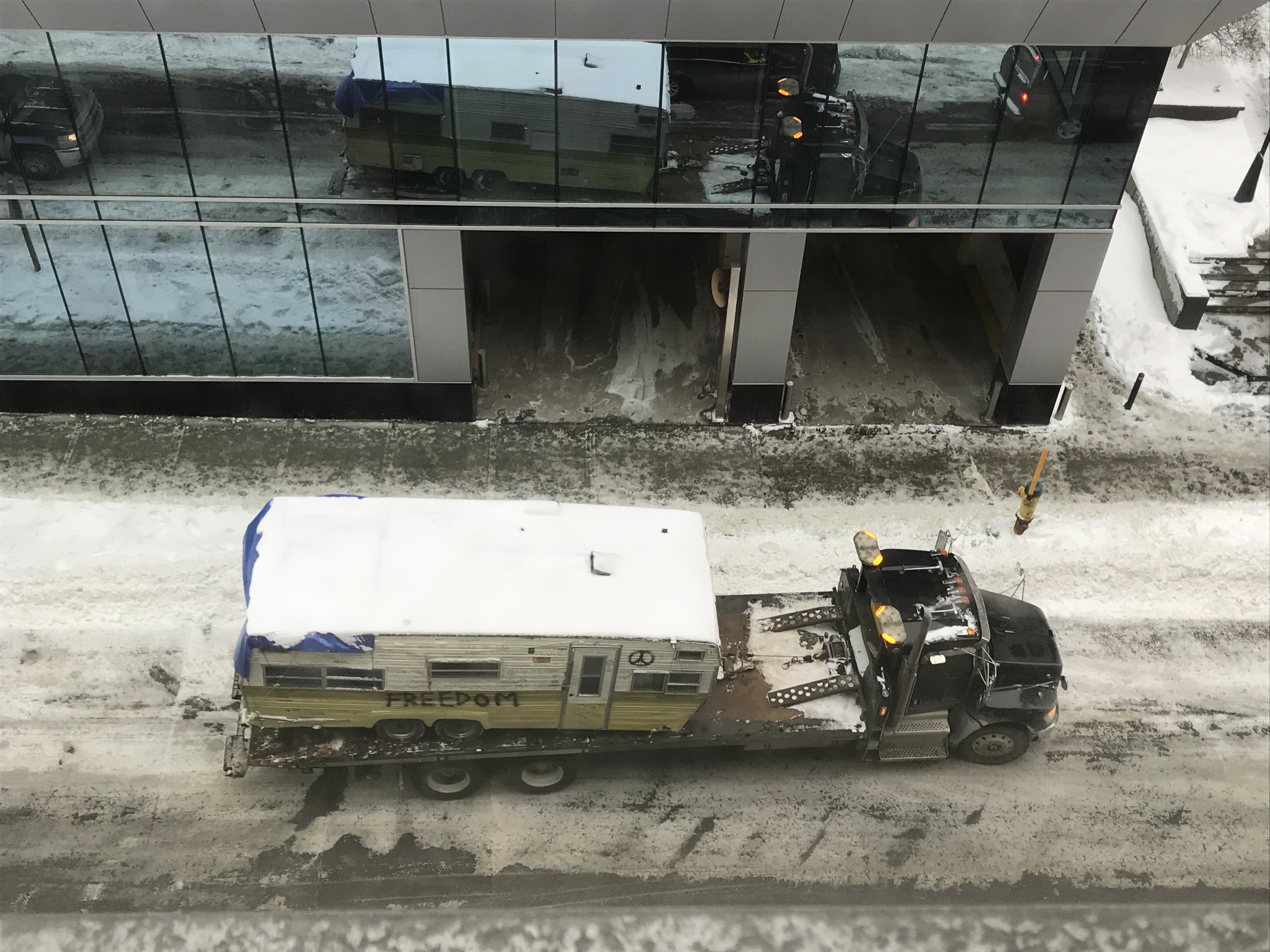
It's always odd to see Canada as any sort of international groundbreaker but a similar convoy, one being cheerleaded by right-wing politicians and media personalities, is being organized in the United States, with plans to get it rolling this week. We've seen copy-cat events in Israel and Australia. Not all were successful—those in Europe fizzled out—but in New Zealand, politicians are now battling a similar encampment situation.
For many protesters, the Siege of Ottawa was but a battle lost in a greater war.
“No, it’s not the end,” said Mitch. “You lose your battles but you don’t lose the war in one shot. It’s gonna take more than this to stop us.”
Follow Mack Lamoureux on Twitter.